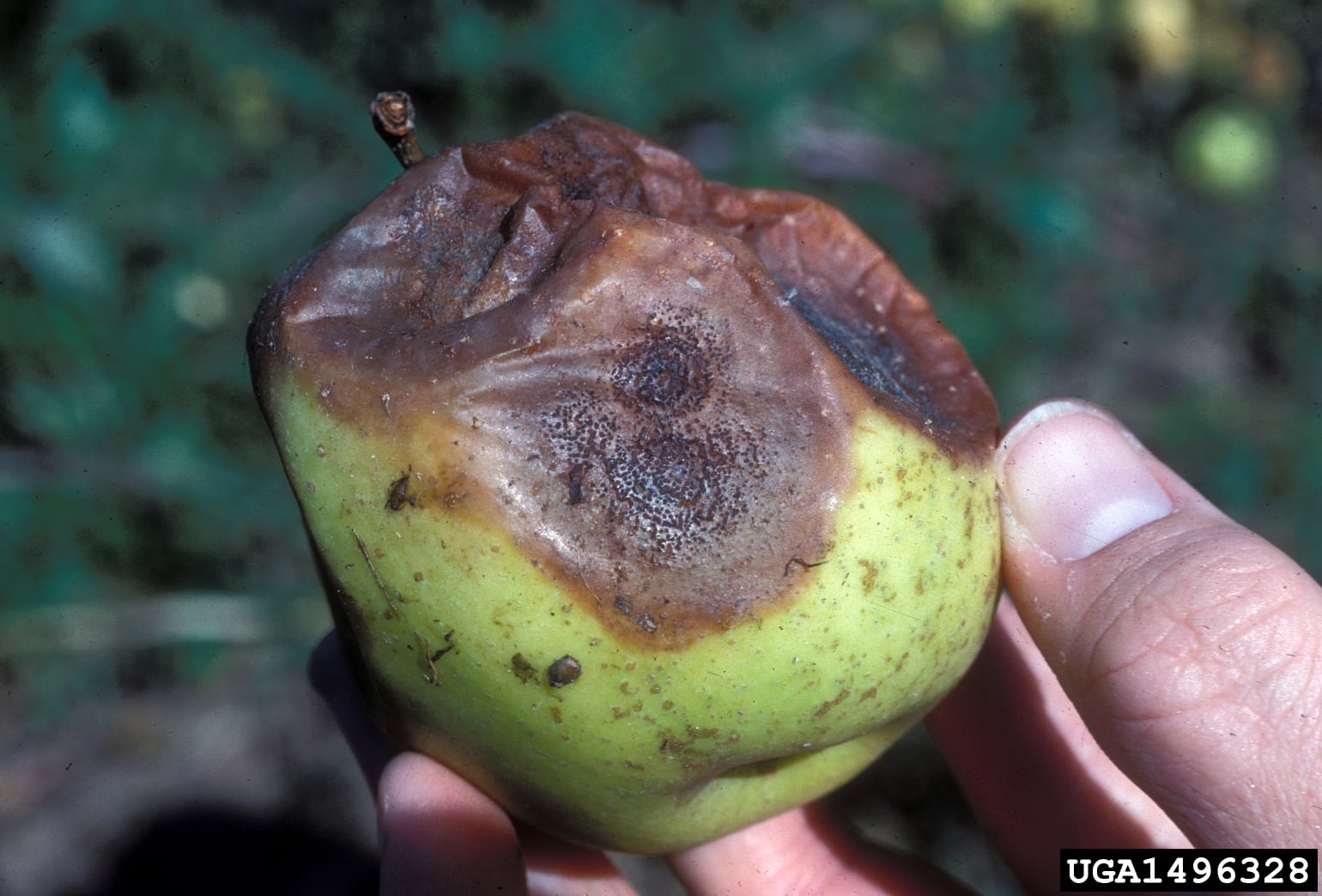Do You Have Spots On Pears – Learn About Bitter Rot On Pear Trees


Fruits with soft, necrotic spots may be victims of bitter rot on pear. This is primarily an orchard disease but may affect homegrown fruit. The disease does not need injury to penetrate the fruit, and it can attack young fruit but is most prevalent on maturing pear trees. Pears with bitter rot will become inedible which is a huge concern in commercial production. Learn how to prevent bitter pear rot in your plants.
What Causes Bitter Pear Rot?
Few things are as delightful as a fresh, ripe pear. Spots on pears may be a symptom of bitter rot, a disease of apples, pears, peach, quince, and cherry. Various conditions affect the development of the disease including temperature, tree health, site, and soil. Bitter rot on pear affects only the fruit and generally occurs during the hottest periods of the growing season. There are several cultural and hygienic steps you can take to prevent pears with bitter rot. The causal agent is a fungus, Colletotrichum gloeosporioides (syn. Glomerella cingulata). It overwinters in fruit mummies, cracked bark, dead plant material, and cankers. The spores are spread by birds, rain splash, wind, and possibly insects. The disease really gets going when conditions are rainy and temperatures are 80 to 90 degrees F. (27-32 C.). When hot, muggy weather occurs late in the season, an epidemic of the fungus may occur. In orchards the disease can spread rapidly from tree to tree, causing huge economic loss. It only affects fruit, although occasionally some cankers will form on tree bark.
Symptoms of Bitter Rot on Pear
Symptoms are generally observed in late summer. The fungus is one of the few that can penetrate the skin of the fruit without an entry wound. The first signs are small, round brown spots on fruit. If temperature and humidity are high, the spots rapidly enlarge. Once the spots become ¼ inch (6 mm.), they begin to sink in and have a saucer shape. Once the spots are ½ inch (1 cm.), the fruiting bodies appear. These are tiny black spots in the rotting center of the spot. Pears with bitter rot then begin to ooze a pink, gelatinous substance that leaks and soaks down onto lower dependent fruits. The fruit will continue to decay and eventually shrink into a mummy.
How to Prevent Bitter Pear Rot
The first steps to avoiding fungal spots on pears is to clean up the area after the harvest period. Remove any mummies on the ground and those clinging to the tree. If there are wounds to the tree, treat them with fungicide or cut damaged limbs back to healthy material. Remove any pruned wood from the area. Provide good care including fertilizer, water, and pruning to encourage healthy growth and a vigorous tree. During the growing season, apply a fungicide every 10 to 14 days to manage the disease. In organic situations, good sanitary practices and care are the best preventatives.
Sign up for the Gardening Know How newsletter today and receive a free copy of our e-book "How to Grow Delicious Tomatoes".

Bonnie Grant is a professional landscaper with a Certification in Urban Gardening. She has been gardening and writing for 15 years. A former professional chef, she has a passion for edible landscaping.